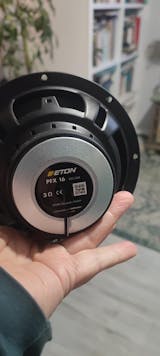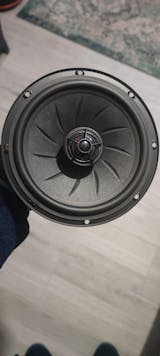

Z-FDB 1-2


GZFH 1.50/1.50 ANL/MANL

M-XB-MFBU-ANL

GZFH 1.20 IL-MANL

Best BFH 11.1


Z-FDB 3-4

Sonus SFD 41C.1

Sonus SFH 11WP.1

First FFH 14.1


XD-FDBU-2
All about ANL and mini-ANL fuseholders
Electrical safety plays a major role in the vehicle. In current-hungry systems, the protection of live cables is essential. The top sellers in this category are: Masori 20 mm²-50 mm² ANL fuse switch Splash-proof, SMD FB-2 Heavy Duty Double ANL fuse switch aluminum, Audio System Z-FDBG 2-4 / Z-DB 9. If you want to jump straight to the most popular brands, we recommend you take a look at : Masori, SMD, Audio system.What is a fuse holder used for?
A fuse holder is used to connect the Power cable in the car and those of the Sound system against overload and short circuits. The fuse value depends on the Cross section of the cable from. Below is an example of the most frequently used cable cross-sections.- Cable cross-section: 0.5 mm² - Max. Current rating of the fuse: 10 A - Cable resistance: 34.20 mOhm/m
- Cable cross-section: 1.0 mm² - Max. Current rating of the fuse: 15 A - Cable resistance: 17.10 mOhm/m
How does a fuse holder work?
ANL fuses are fitted with a thin Strip locking plate which burns out at a certain amperage and interrupts the circuit. The housing of the Fuses serves as fire and splash protection. Mini-ANL Fuses are designed for a maximum current of up to 175 A, larger models protect up to 300 A. Both fuse types are suitable for power-hungry Amplifier designed. With cable cross-sections of 35 mm², it makes no difference which type of fuse is used.What types of fuse holders does Masori offer?
Our range includes small mini ANLs Fuses for connecting a cable and large ANL fuse blocks that provide space for up to 8 Power lines offer. We also offer a model with an integrated voltmeter, which makes voltage drops directly visible. The Fuses are absolutely weather-resistant and designed for many years of use.Which manufacturers does Masori distribute?
Our range currently includes Masori Fuse holders from the following manufacturers: Audio System, Ground Zero, JL Audio,Masori, Pride, Rockford Fosgate, SMD,Conclusion
Fuses are essential for safe operation and protect both the hardware and the people in the vehicle. The fuse holders are available in different designs and sizes and reliably protect the cables against overload.
Fuses:
Fuses protect the circuits they protect against impermissibly high currents caused by overloading due to short circuits, excessive current consumption by loads or other faults.
Defective fuses must always be replaced with fuses of the same rated current. In emergencies, use fuses with a lower rated current rating until the next workshop.
Fuses must never be repaired using "bridges" made of conductive materials. There is a risk of serious damage to the vehicle electrical system, including a cable fire!
Protect fuses and their plug connections from dirt and corrosion. Bend or replace loose or corroded contact plugs.
Fuses are used in automotive engineering to protect circuits and cables against short circuits and overloading due to excessive current flows. There are now a whole range of fuse types on the market, although some designs are no longer used.
As a rule, fuses are used in which a metal strip integrated into the fuse melts and interrupts the circuit if an overload or short circuit occurs.
Automatic circuit breakers are used rather rarely and only for certain applications (e.g. electric windows, central locking), which use a bimetal element to interrupt the current in this circuit for a certain time in the event of an overload or continuous operation.
Glass fuses
Glass fuses were mainly used by American and Asian vehicle manufacturers until the advent of ATO fuses.
Today, these glass fuses are still occasionally used as appliance fuses (e.g. car radios), although they have now largely been replaced by ATO fuses.
The exact type of fuse to be used for replacement is indicated on the metal caps.
Glass fuses measuring 5 x 20 mm are commonly used on the European market, while fuses measuring 6.3 x 32 mm are frequently used on the American and Asian markets.
As a rule, a maximum rated current limit of 20 A is used for glass fuses.
ANL fuses
ANL fuses, which are designed for high rated currents (usually more than 40 A), are installed in relatively new vehicles in particular.
These fuses are usually located directly next to the vehicle battery in a fuse box and are bolted in place.
This type of fuse is also standardized in accordance with DIN 43560 or DIN 72581.
To avoid short circuits caused by tools, the battery must be disconnected before replacing these fuses.
If an ANL fuse blows, a major problem in the on-board electrical system can be assumed.
A check of the on-board electrical system by a specialist workshop is recommended to prevent further damage.
ATO fuse
This type of fuse was developed around 1976 and was first used in large-scale production in the Opel Kadett D, which appeared in 1979. Today, this type of fuse has become standard for almost all vehicle manufacturers.
ATO stands for "Automotive Technology Organization".
This type of fuse is standardized in accordance with ISO 8820-3.
The advantage of this type of fuse is the small space requirement and the relatively wide contact blades, which ensure a secure contact in the plug and thus keep contact resistances and therefore the voltage drop in the vehicle electrical system low.
The colour of the fuse body indicates the rated current.
Fuse types in the store:
ANL fuse
MiniANL fuse
AFS fuse
ATO fuse
Flat plug fuses
Glass fuses





























































